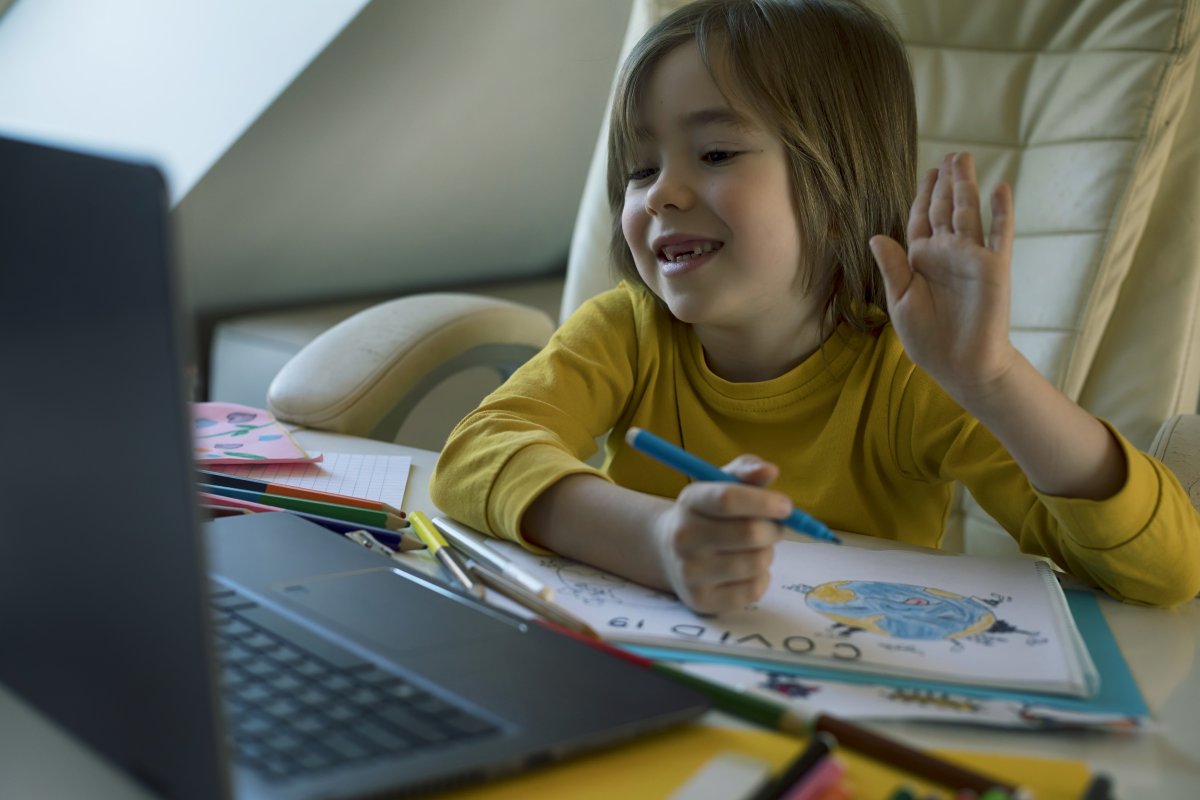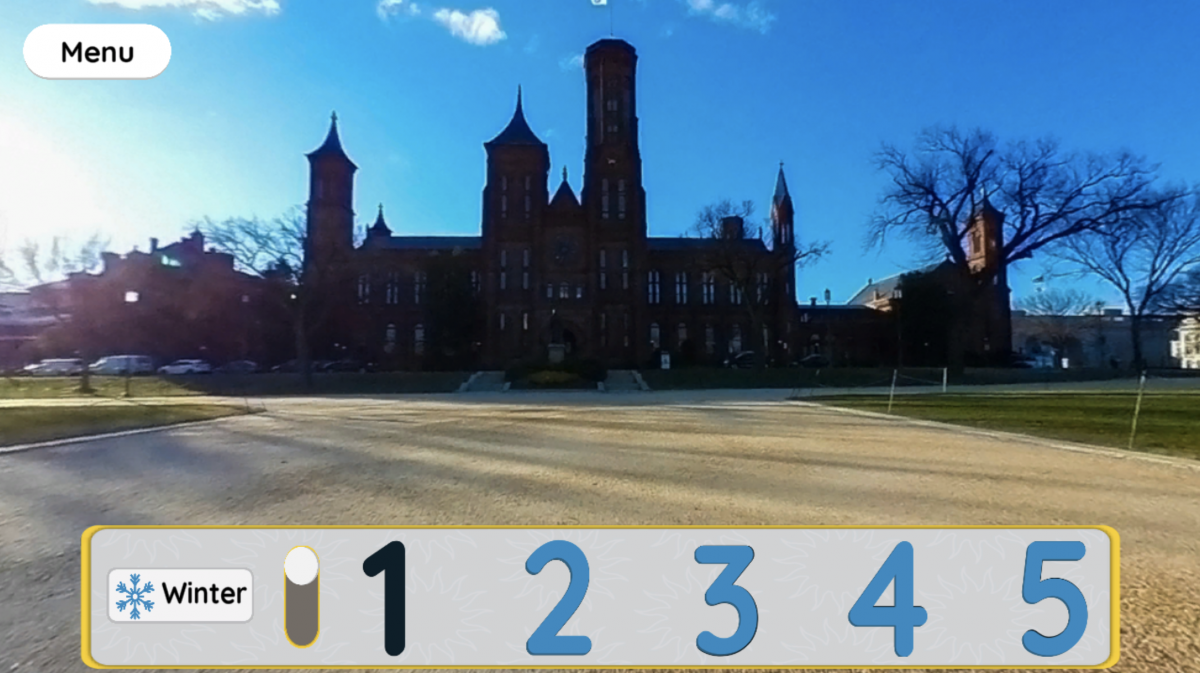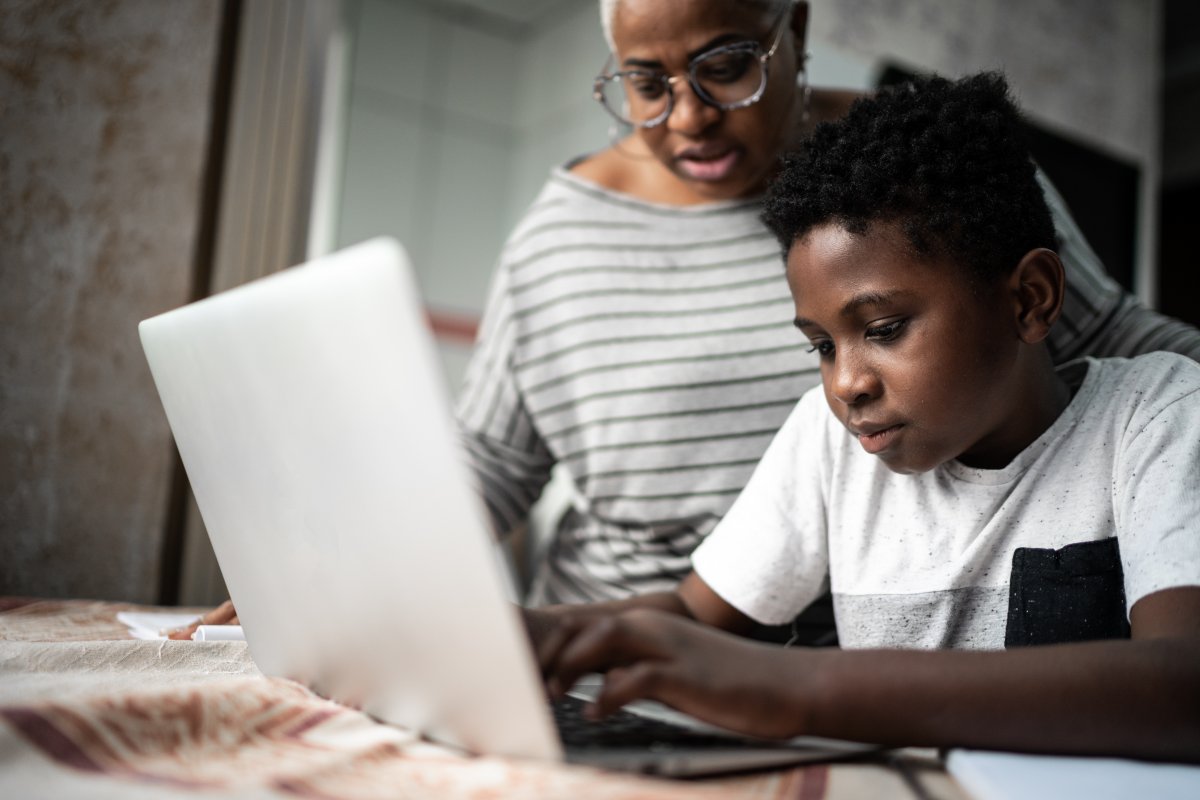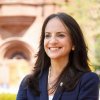Learning Science @ Home*
Home as A Place of Discovery
Homes are special places of discovery, abound with scientific phenomenon and engineering marvels. They are also places where student sensemaking and problem-finding are king; and intergenerational learning of science—where all generations can learn together (Lawson et al, 2019)—is common. A home is a place where anyone with a question can be a scientist.
- Mom, who invented the internet and how does it work?
- Dad, what is a “smart home”?
- Aunt Aliya, where did the water go after the rain stopped?
- Uncle Bo, when does the sun rise in the winter?
- Nana, why do clothes dry when you hang them outside?
- Jackie, how does the elevator in our apartment know where to stop?
Learning at Home During COVID-19
COVID-19 has put renewed focus on the importance of learning from home. When the 2020-2021 school year started, 39 of the nation’s 50 largest school systems—affecting more than 6.1 million students—were among those that chose a distance learning instructional model (Education Week, 2020). Some chose a hybrid model that combined remote learning—where students learn at home—and in-class learning in various forms (SSEC, 2020).
When schools first closed in March 2020 due to COVID-19, most education organizations around the globe, including the Smithsonian Institution, supported distance learning by providing comprehensive links to learning resources for educators, students, and caregivers across all disciplines and domains. The Smithsonian’s Learning Lab and its Distance Learning page are good examples.
For science learning in particular, the Smithsonian Science Education Center, National Museum of Natural History, National Air and Space Museum, Cooper Hewitt, Smithsonian Design Museum, National Zoo and Conservation Biology Institute, Smithsonian Environmental Research Center and other Smithsonian organizations provided free resources for caregivers, students, and teachers. Some of these educational games, simulations, videos, eBooks, and hands-on virtual lessons align with K-12 science standards that guide school-based science learning at home. Some resources require mobile technology. Others can be printed out and used in low-tech environments. This multi-modal approach is designed to support learning across the digital divide (Chandra, 2020).
Three-Dimensional (3-D) Science Learning at Home
The key to successful high-quality science learning at home for young students is the ability for schools to transfer school-based K-12 standards-driven science curriculum from teachers who are trained in three-dimensional learning, to students learning at home. Three-dimensional (3-D) learning is a term in K-12 science education that emerged in the past decade (NRC, 2012). It means that we no longer just teach about disciplinary core ideas—such as geology and other building blocks of science education; we also teach how to do science and engineering—the practices; and, we focus on concepts that cut across disciplines—like cause and effect and patterns. While science learning at home does not have to duplicate science learning at school exactly (CSSS, 2020), science learning at home should include these three dimensions of knowing, doing, and connecting.
 A young boy participates in virtual science education. Portishead/E+Getty Images Plus
A young boy participates in virtual science education. Portishead/E+Getty Images Plus
Based fundamentally on A Framework for K–12 Science Education: Practices, Crosscutting Concepts, and Core Ideas (NRC, 2012), learning science at home requires students to figure out the world around them—to make sense of phenomena and problems—by engaging in investigations that weave together science and engineering practices, crosscutting concepts, and disciplinary core ideas to demonstrate learning. When students learn to behave as scientists and engineers—observe, question, analyze, test, evaluate, and communicate—they are developing the critical-thinking and problem-solving skills that will help them better understand the world around them (SSEC, 2020).
Learning Science and Engineering at Home Through Sensemaking and Problem-Finding
Students need to talk about their ideas and what they are thinking when engaged in K-12 science and engineering at school or at home. Educators call this “student sensemaking,” which entails being active, self-conscious, motivated, and purposeful in the world (Fitzgerald, 2019; Morrison & Rhinehart, 2017; Weick, 1995). A good example of academic sensemaking at home can be seen in this at-home activity from the Smithsonian Science Education Center where students explain why their shadow is shorter sometimes and longer other times. Caregivers help young students engage in sensemaking by eliciting students’ ideas about the Sun’s position in the sky, encouraging students to relate their thinking about day and night to other students’ ideas, or asking students to reason about seasons using evidence from a simulation of sunlight on the National Mall.
 Sunlight on the National Mall allows students to uses sensemaking at home. Smithsonian Science Education Center
Sunlight on the National Mall allows students to uses sensemaking at home. Smithsonian Science Education Center
When engaged in engineering at home, young students should focus on problem-finding as well as problem-solving. Students engage in the engineering design process by observing, making, designing, and testing solutions to problems with simple objects from home in hand; not by focusing on memorizing engineering facts or procedures. For example, Smithsonian Science for Makerspaces is a series of free engineering design challenges for students to engage with emerging technologies through hands-on learning. Inspired by Smithsonian Science for the Classroom, these activities bridge formal classroom-based science education and the makerspace movement with at-home learning by helping students in grades K-5 engage with digital and physical technologies within the context of science, technology, engineering, arts, and math (STEAM).
The Role of Culture, Context, and Place in Learning Science at Home
Few of us would disagree that historically, families, parents, and other caregivers have had a strong influence on children’s learning (MacBeth, 1993). The home is a social place, filled with cultural norms and context that can strengthen science learning.
Recent research on the general public’s scientific knowledge shows that while most caregivers may report not knowing much about science, they are willing to help children with science activities at home (Pew Research, 2018; Solomon, 2003). But research also shows that how science information is received affects the nature of understanding—the stronger the connection between the scientific idea being taught and the context in which it is taught, the stronger the understanding (Wynne, 1989; Ziman, 1991). This is why at-home “place-based” science learning is so important (Bell, Morrison, & Debarger, 2015; O’Donnell, 2020). It promotes learning that is rooted in what is local to the family—the unique history, environment, culture, economy, literature or art of a particular place using a child’s own immediate schoolyard, neighborhood, town, or community as a place of learning (Elfer, 2011).
Learning science at home should promote observation of scientific phenomenon in the natural world; encourage student sensemaking, wonder, and problem-finding; and promote scientific discourse between parent and child, often in the context of home culture (Aikenhead, 1996; Rodriguez & Bell, 2018; Solomon, 2003). For example, a 5th grader studying the science of sugars and starches might discuss their cultural experiences with corn and share stories of family meals. An engineering design project might involve designing a new composting bin for the home based on cultural norms for food preparation.
Intergenerational Science Learning
With students at home, learning may also be intergenerational, with children inspiring adults towards higher levels of science learning, and potentially collective action. Child-to-parent intergenerational science learning—that is, the transfer of knowledge, attitudes, and behaviors from children to parents—is particularly important when learning is focused on the complex socio-scientific issues of our time, such as pandemics, environmental racism, and climate change (Lawson et al., 2019).
 A mother and son participate in intergenerational learning. FG Trade/E+/Getty Images Plus
A mother and son participate in intergenerational learning. FG Trade/E+/Getty Images Plus
The Smithsonian Science for Global Goals project is designed to promote intergenerational learning. It supports parents, students, and educators as they discover, understand, and act on global issues, such as mosquito-borne diseases, food security, biodiversity, sustainable communities, and pandemics. For example, “COVID-19! How Do I Protect Myself and Others?” is a free hands-on guide for youth ages 8-17 and their caregivers and is available in 24 languages. It is filled with practical hands-on science activities students and caregivers can do together at home to better understand the underlying science of COVID-19. This place-based learning program hypothesizes that students (and caregivers) are more likely to engage in protective behaviors at home, in school, and in their communities if they understand the science of WHY they are being asked to engage in these behaviors (e.g., hand-washing, wearing face masks, physical distancing, contact tracing, sorting through claims and evidence). To date, the guide has had 33000 downloads/views, been distributed to over 2255 caregivers and teachers in 35 countries, impacting over 53003 students across the globe.
Conclusion
There’s value in becoming scientifically literate regardless of who you are, where you learn, what questions you ask, or how you engage. No matter what resources you use, success of at-home science learning should include the three dimensions of knowing, doing, and connecting. It should promote practical hands-on activities that use materials found in the home, focus on familiar scientific phenomenon that encourage student sensemaking, and be grounded in place, culture, and context to strengthen intergenerational learning of science—where all generations can learn together.
About the Author
Dr. Carol O’Donnell is Director of the Smithsonian Science Education Center, dedicated to transforming K-12 Education through Science™ in collaboration with communities across the globe. Carol serves on numerous boards and committees dedicated to science education and is on the part-time faculty of the Physics Department at George Washington University, where she earned her doctorate. Carol began her career as a primary school teacher. Her TedX Talk demonstrates her passion for “doing science” and “object-driven learning.”
*the author acknowledges that “home” is broadly defined as the place where the child and his/her caregiver reside; in addition, the term “caregiver” is used broadly to include parents and all others who care for children at “home”
Header image credit: ake1150sb/iStock/Getty
References
- Aikenhead, G.S. (1996). Science education: Border crossing into the subculture of science. Studies in Science Education, 27, 1–52.
- Baumert, J., Evans, R., & Geiser, H. (1998). Technical problem-solving among 10-year-old students as related to science achievement, out-of-school experience, domain-specific control beliefs, and attribution patterns. Journal of Research in Science Teaching, 35, 987–1013.
- Bell, P., Morrison, D., & Debarger, A. (2015). Practice Brief #31: How to launch STEM investigations that build on student and community interests and expertise. Teaching Tools for Science, Technology, Engineering, and Math (STEM) Education. Seattle, WA: University of Washington Institute for Science + Math Education. Available: http://stemteachingtools.org/brief/31
- Chandra, S., Chang, A., Day, L., Fazlullah, A., Liu, J., McBride, L., Mudalige, T., & Weiss, D. (2020). Closing the K–12 Digital Divide in the Age of Distance Learning. San Francisco, CA: Common Sense Media, Boston, MA: Boston Consulting Group. Available: https://www.commonsensemedia.org/kids-action/publications/cl...
- Council of State Science Supervisors (CSSS). (2020). Guidance for Supporting Science Learning During COVID-19. Available: http://stemteachingtools.org/news/2020/guidance-for-supporti...
- Education Week Market Brief. (August 7, 2020). Reopening Schools Tracker: Latest Data from Districts Across the U.S.” Available: https://marketbrief.edweek.org/exclusive-data/reopening-scho...
- Elfer, C. J. (2011). Place-based Education: A Review of Historical Precedents in Theory and Practice. Dissertation submitted to the Graduate Faculty of the University of Georgia. Available: https://getd.libs.uga.edu/pdfs/elfer_charles_j_201108_phd.pdf
- Fitzgerald, M. S., & Palinscar, A S. (2019). Teaching practices that support student sensemaking across grades and disciplines: A conceptual review. Review of Research in Education, (43)1, 227-248.d Available: https://journals.sagepub.com/doi/full/10.3102/0091732X18821115
- Hewison, J. (1988). Parental involvement in reading attainment. In Woodhead, X. & McGrath, X. (Eds.), Family, school and society (pp. 268–277). London: Hodder & Stoughton.
- Lawson, D. F., Stevenson, K. T., Peterson, M. N., Carrier, S. J., Strnad, R. L., & Seekamp, E. (2019). Children can foster climate change concern among their parents. Nature Climate Change (9), 458-462.
- Macbeth, A. (1993). Preconceptions about parents in education. In Munn, P. (Ed.), Parents and schools (pp. 27–46). London: Routledge.
- Morrison, D. & Rhinehart, A. (2017). Practice Brief #48: How can teachers guide classroom conversations to support students’ science learning? Teaching Tools for Science, Technology, Engineering, and Math (STEM) Education. Seattle, WA: University of Washington Institute for Science + Math Education. Available: http://stemteachingtools.org/brief/48
- National Research Council (NRC). (2012). A Framework for K-12 Science Education: Practices, Crosscutting Concepts, and Core Ideas. Committee on a Conceptual Framework for New K-12 Science Education Standards. Board on Science Education, Division of Behavioral and Social Sciences and Education. Washington, DC: The National Academies Press.
- O’Donnell, C. (2020). What Does High-Quality Science Teaching and Learning Look Like? Using Real-World Problems to Drive Student Learning Through Integrated Hands-on and Digital Experiences. Dallas Fort Worth, TX: Metroplex Area Science Supervisors Meeting. Available: https://ssec.si.edu/sites/default/files/2019_Freshwater_USE.pdf
- Pew Research Center. (2018). Women and Men in STEM Often at Odds Over Workplace Equity. Available: https://www.pewsocialtrends.org/2018/01/09/stem-acknowledgme...
- Rodriguez, A. J., & Bell, P. (2018). Practice Brief #55: Why is it crucial to make cultural diversity visible in STEM education? Teaching Tools for Science, Technology, Engineering, and Math (STEM) Education. Seattle, WA: University of Washington Institute for Science + Math Education. Available: http://stemteachingtools.org/brief/55
- Smithsonian Science Education Center (SSEC). (2020). Finding Balance in Middle School Science. Burlington, NC: Carolina Biological. Available: https://www.smithsonianstc.com/case-studies-white-papers-172...?
- Solomon, J. (2003). Home-school learning of science: The culture of homes, and pupils’ difficult border crossing. Journal of Research in Science Teaching, 40(2), 219-233.
- Wynne, B. (1989). Misunderstood misunderstanding: Social identities and the uptake of science. Public Understanding of Science, 1, 281–304.
- Ziman, J. (1991). The public understanding of science. Science Technology and Human Values, 16, 99–10.
